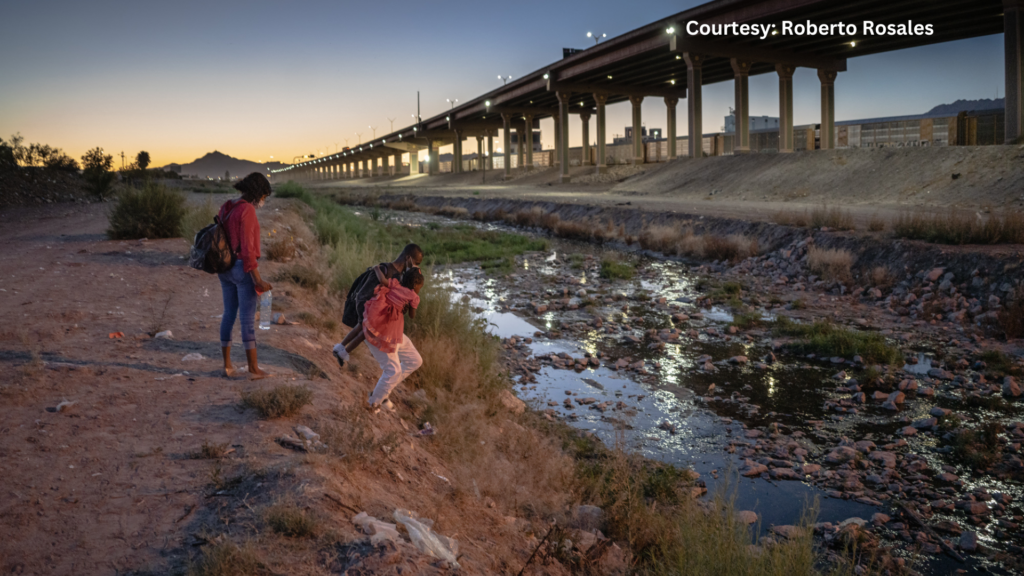‘Participatory Defense’

I remember being struck in July by one of the signs delegates and other attendees of the Republican National Convention gleefully waved ceilingward inside Milwaukee’s Fiserv Forum as speakers frothed onstage about the party’s stance on immigration. “Mass deportation now!” read the sea of star-spangled, red, white and blue placards.
That seems like a long time ago, but the sentiment behind those signs has begun to harden since President-elect Donald Trump won on Nov. 5. His proposed appointments to several key immigration-related positions — particularly Tom Homan, who will serve as Trump’s “border czar” — have crystalized the message in the intervening weeks: The plan is to deport all 11 million people who are in the country undocumented.
As a border state, this shift in rhetoric and policy on immigration has profound implications for New Mexico. So, we wanted to get a sense of how the change will play out here, and we are grateful to Sophia Genovese, managing attorney at the New Mexico Immigrant Law Center, for coming back on our show to help explain.
At the beginning of our conversation, Sophia sketched the lay of the land by offering a bit of context. Presidents Barack Obama and Joe Biden created categories of people to direct their immigration law enforcement. The first were newly arrived asylum seekers; the other, undocumented people who had contact with criminal law enforcement inside the US.
Of course, anyone living in the US undocumented was and remains at risk of removal, Sophia pointed out, but “under Obama and Biden, because they focused their resources, they were able to deport many more people” during their presidencies than was Trump the first time he occupied the White House. That’s because Trump got rid of the categories and made everyone a priority. This led to workplace raids, families being separated, detained and forced into removal proceedings — but fewer deportations.
“I anticipate that same thing happening come [Inauguration Day in] January as suddenly everyone is a priority for enforcement again, and that clogs the system,” Sophia told me. “It’s incredibly scary, but logistically it is impossible to deport 11 million undocumented people.”
These logistics may come to the chagrin of those convention goers in Wisconsin, but they are facts.
As she has in each of her appearances on New Mexico in Focus, Sophia laid out the truth alongside some solutions.
“Communities need to be prepared to fight back against enforcement, fight back against detention and deportation, but also be very clear-eyed about what is logistically possible,” she said.
Near the end of our conversation, Sophia added some color to the picture of what fighting back could look like in this space. She told the story of a woman she represented in a deportation case when she was working in New York and New Jersey — a woman who won her freedom and her right to fight for status through something called “participatory defense.” For those not familiar with the concept, I encourage you to watch my interview with Sophia.
“She was released not as a result of any legal advocacy I did as her lawyer,” Sophia said. “It was the community pressure demanding her release from detention that got her out. And so this type of sustained organizing from ordinary folks all across the state is going to be critical as we interrupt the deportation system, interrupt the detention system. You don’t need any specialized skills to do this; you just need to stand up and use your voice.”
-Jeff Proctor, Executive Producer
-
Poetry As a Way To ‘Build Empathy’
12.6.24 – For New Mexico Poet Laureate Lauren Camp, poetry is a way to “build empathy.” In conversation with Our Land…
-
Without Rights, NM’s Rivers Can Come Up Empty
12.6.24 – In New Mexico, rivers lack rights to their own waters, which means that when dry times strike — or…
-
Living in Shelters and the Streets of ABQ
12.6.24 – KUNM’s Megan Kamerick speaks with HopeWorks director James Freeman about his experience living on the streets of Albuquerque. Freeman…
-
Immigrant Rights in NM Under a New Trump Administration
12.6.24 – Executive Producer Jeff Proctor sits down with Sophia Genovese, an attorney with the New Mexico Immigrant Law Center. Genovese tells…





